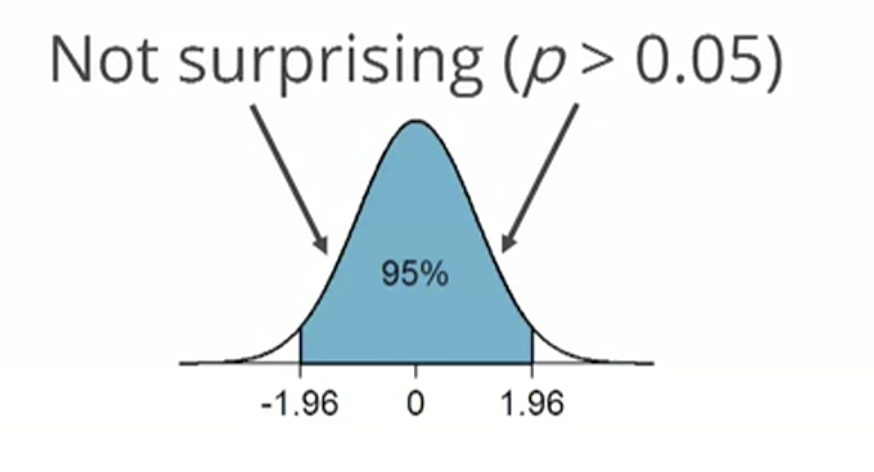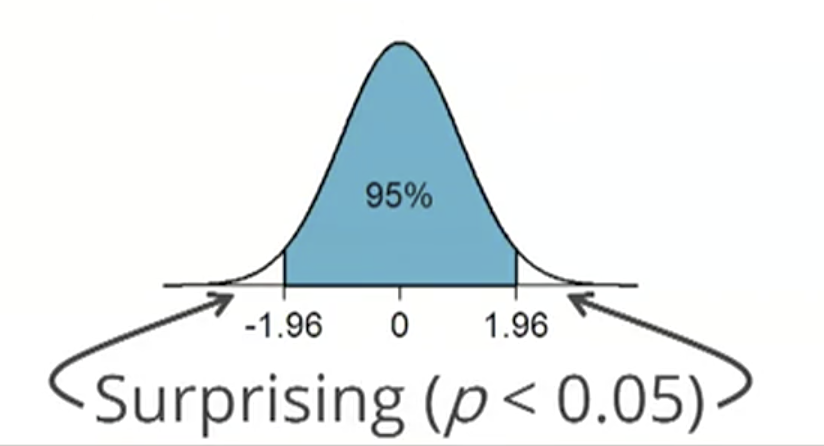Why it is so successful in science?
In some sense it offers a first line of defense against being fooled by randomness, separating signal from noise.
Definition
- p-values tell you how surprising the data is, assuming there is no effect.
- formal definition:
A p-value is the probability of getting the observed or more extreme data, assuming the null hypothesis is true.
在假设原假设(H0)正确时,出现观察到的现状或更差的情况的概率
Example
Does driving while calling increase the risk of a car accident? 设计实验,一组司机开车打电话,一组司机开车不打电话,然后对比发生事故的概率。
- The difference is never exactly zero. A difference of e.g., 0.11 means:
- Probably just random noise.
- Probably a real difference
Null hypthesis
假设零假设为真,即符合中心为0的正态分布。
- Assuming null hypthesis is true, means most of the data will fall between these two critical values.


Important notes
- A p-value is the probability of the data, not the probability of a theory.
- You can’t get the probability the null hypothesis is true, given the data, from a p-value. \[P(D*|H) ≠ P(H|D)\]
- A single p-value is not enough to declare a scientific discovery; only when we can repeatedly observe something, we can consider it a reliable observation.
How to use pValue correctly?
- Use p-values as a rule to guide behavior in the long run.
- 不能说,因为\(p < x\),所以理论正确。应该说,因为\(p < x\),所以结果符合预期。
Hwo to calculate pValue?
以抛硬币实验为例完成假设检验 - 假设:硬币是公平的 - 检验:认为假设是成立的,然后扔十次,看结果与假设是否相符
反复扔硬币符合二项分布),也就是: \[X\sim B(n,\mu)\]
其中, n代表扔硬币的次数,\(\mu\)代表“花”朝上的概率。
在我们认为硬币是公平的前提下,扔1000次硬币应该符合以下分布:
\[X\sim B(1000, 0.5)\]

若1000次抛硬币实验结果为正面朝上530次,则pVlue取530以及更极端的点组成组成区间。 
什么是显著水平\(\alpha\)?
抛一千次硬币,我们认为出现530次正面之后,硬币是不公平的,还是出现580次正面之后,硬币是不公平的,这是一个主观标准。
我们一般认为: \[\text {p-value}\leq 0.05\] 就可以认为假设是不正确的。
表示出来如下图所示:  我们可以认为刚开始的假设错的很“显著”,也就是“硬币是不公平的”。
我们可以认为刚开始的假设错的很“显著”,也就是“硬币是不公平的”。